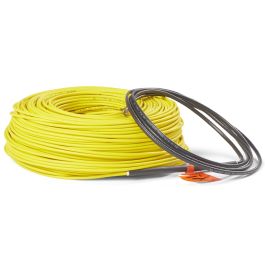Resistance heating cable works by using electrical resistance to generate heat. The cable is made up of a conductor that is surrounded by insulation material, which is then wrapped in a protective layer for added safety. When electricity flows through the conductor, it meets resistance, and this resistance generates heat, which is then transferred to the surface being heated.

One of the most significant benefits of using resistance heating cable is that it is cost-effective and energy-efficient. This means that it can help reduce electricity bills while still providing consistent and reliable heat. Unlike traditional heating systems, resistance heating cables can be easily installed and controlled, and they require very little maintenance, making them a popular choice in both residential and commercial settings.
Resistance heating cables are versatile and can be used in a wide range of industries. In the construction industry, they are commonly used to heat floors, roofs, and gutters, ensuring that they remain free of ice and snow during cold weather. They are also used in the oil and gas industry to prevent freezing in pipelines and ensure that fluid continues to flow smoothly.
In the food and beverage industry, resistance heating cables are used to regulate the temperature in various areas, such as refrigerators, freezers, and storage rooms. They are also used in the agriculture industry to prevent crops and livestock from freezing in cold weather.
Overall, resistance heating cable is an efficient, cost-effective, and reliable way to regulate temperature in a wide range of settings. Choosing the right cable for a specific application will depend on factors such as the size of the area to be heated, the required temperature, and the type of surface being heated. Installing resistance heating cable can help businesses and homeowners save on energy costs and ensure the safety and comfort of those using the space.